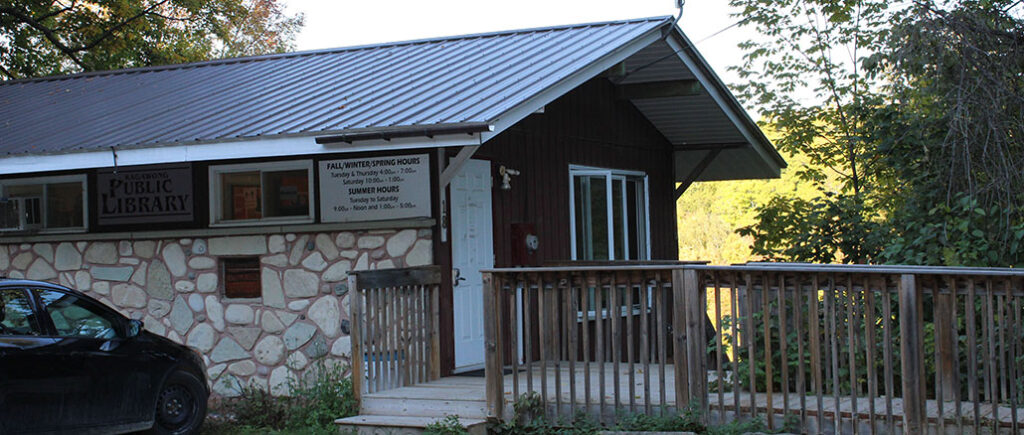Young families and teenagers have not returned to libraries following pandemic lockdowns, accelerating the impact of an aging population upon rural library relevance.

Maureen Strickland
Kicker
As pandemic restrictions lift, Billings Township Public Library is seeing older patrons come back, but the numbers of young families and teenagers have not returned to pre-pandemic levels.
The municipality has always kept the limited landfill and library hours on the same day and time in order to maximize the use of both services. Before the pandemic, these services were offered on Tuesday, Thursday and Saturday with a three hour window each day for the library.
“The patrons would go to the dump, and then go to the library,” said Jill Ferguson, CEO and head librarian.
With the ongoing uncertainty in opening hours from May 2020 until June 2021 patrons got out of the habit of weekly visits to the library.
This rural library serves a community of 603 residents. Three hundred and nine residents are library members, including summer-only residents.
In 1968, the library opened in a spare room of a resident’s home. Then in 1984 the municipality built its current home. For older community members, the social element has always been just as important as getting the latest book off the new acquisitions shelf, said Ferguson.
Then the pandemic hit and the library had to pivot. For months, only curbside pick-up was available. The computer terminals that attracted teens and tourists alike were removed. Due to sanitation protocols, the terminals have not returned. Patrons must now bring their own devices to use the free wireless.
The library created a webpage where patrons could pre-order books for pick up or they could link to the provincial library e-book system called Overdrive. According to Ferguson, the use of Overdrive brought in new patrons and increased the number of items in circulation. In many ways, the digital pivot had a positive impact.
When full-time hours resumed in the summer of 2021, the library made a concerted effort to bring people back. Ferguson noted that special ‘analogue’ efforts were needed to inform older patrons that the library was back to normal hours and usage. Paper flyers were inserted into regular municipal mailings, and slowly the patrons returned.
Young families and teenagers do not return
The exception has been young families and teenagers.
Rachael Orford, 17, lives down one of the many side roads in the largely agricultural community. From a young age, she was a regular patron of the Billings Library. Her mother, Sally, instilled in her a love of reading, and holding, the actual book. Most Saturdays, year-round, they would make sure to get to the library between 10 a.m and 1 p.m.
Rachael has stopped going to the library. The uncertainty of both opening hours and book availability during lockdowns, combined with more time constraints as an active high school student left a library sized hole in her life.
Rachael says ‘purchasing books online filled that hole’.
According to the 2016 census 12 per cent of the population of Billings is under 19, while two-thirds of the population of the township is over the age of 50.
As reported in the June 5, 2020, edition of Publishers Weekly, “Observers in recent years have argued that if public libraries didn’t already exist, we wouldn’t be able to invent them. In the wake of the COVID-19 crisis, the question is: Can we reinvent them?”
In Billings Township, the aftermath of the crisis has sped up the impact of an aging rural population on the library’s relevance and long-term survival. Will this reinvention still involve paper, bricks and mortar?



Be the first to comment